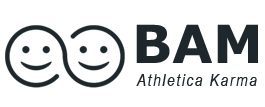Most of us have come across those floor dropping muscle spams in the calf, whether playing sports, lying on the couch or in bed.
To help prevent those excruciating moments when the calf muscle seizes, consistent stretching and exercise of the calf and muscles will help. In this post, we’ll cover how to perform simple calf stretches and what you can do with a simple tool called a calf stretcher at home, at the office, at the gym and even how you can use a calf stretcher for yoga. Calf stretchers are typically lightweight and portable, making them easy to use at home or in a gym. You can also use a slant board for the same purpose, but with greater versatility to use for other exercises to build flexibility, mobility, strength and more. You may have come across a calf stretcher by other names; slant board for calf stretch, squat wedge, achilles stretcher, foot stretcher, foam stretcher, plantar fasciitis stretcher and the list goes one.
If you have’t come across one before, a calf stretchers are devices that are used to stretch the muscles in the calf, which can help to improve flexibility and reduce the risk of injury. By design, they are different than a slant board that can serve the same purpose. Instead a calf stretcher are typically are adjustable panels or wedges you can use while sitting or standing. They can be used by athletes, yogi’s, dancers, physio rehab from injuries or anyone who wants to improve the flexibility and range of motion in their calf muscles.
Are calf stretchers effective?
Calf stretchers also a good way to relieve the pain and tightness, specially in those who suffer from tight calf muscles, plantar fasciitis, achilles tendonitis, heel spurs and other lower leg injuries. It’s also a good idea to use them as a warm up before doing any calf intensive exercises, and then after for cooling down.
Also known as a calf wedge, it’s an effective tool for stretching the calf muscles and improving flexibility, range of motion, and reducing the risk of injury. You’ll often see these tools at a physio therapist office, in the gym for squat workouts or in the yoga studio woven into some very cool yogi moves. However, it’s important to use calf stretchers properly in order to get the most benefit from them.
When using calf stretchers, it’s important to start slowly and gradually increase the intensity of the stretch over time. It’s also important to use proper form, making sure to keep the back straight and the knee of the stretching leg straight. It’s also important to not overdo it, to avoid pain and injury
It’s also a good idea to incorporate other stretching exercises, such as dynamic stretching, use of a resistance band and foam rolling, into your routine to help improve flexibility and reduce muscle tightness. Stretching should be part of a well-rounded exercise program that includes strength training, cardio, and other activities.
It’s also important to note that calf stretchers may not be suitable or effective for everyone, specially those with chronic pain, who should seek guidance from a professional before using any stretching device.
Overall, calf stretchers can be an effective tool for stretching the calf muscles and improving flexibility, but it’s important to use them properly and in conjunction with other stretching and strengthening exercises for best results.
Can I use a slant board instead for muscle calf stretching?
Yes. Both a slant board and calf stretcher are complimentary to one another. If you’re not familiar, wooden slant board is a piece of equipment you may have in the gym or at home that can be used to stretch the muscles in the calves. The benefits of using a slant board for calf stretching include:
- Increased flexibility: Stretching the calf muscles on a slant board can help to increase the range of motion in the ankles, which can lead to improved flexibility and a reduced risk of injury.
- Improved circulation: Stretching the calf muscles can help to improve blood flow to the area, which can reduce muscle soreness and fatigue.
- Reduced risk of injury: Tight calf muscles can contribute to the development of conditions such as plantar fasciitis and Achilles tendonitis. Stretching the calf muscles on a slant board can help to prevent these types of injuries by keeping the muscles flexible and strong.
- Reduced muscle soreness: Stretching the calf muscles after exercising can help to reduce muscle soreness and promote recovery.
- Improved athletic performance: Stretching the calf muscles can improve the flexibility and strength of the muscles, which can lead to improved athletic performance.
It is worth mentioning that when using the slant board for calf stretches, its important to use proper form and to not push yourself too hard in the stretches. Also, it’s essential to do some warm-up exercises before using the slant board to prevent injuries.
Benefits of using a calf stretcher at the office?
Using a calf stretcher at work or in the office can provide a number of benefits, including:
- Reduced muscle tension: Sitting for long periods of time can cause the muscles in the calves to become tight and fatigued. Using a calf stretcher can help to alleviate this tension and reduce the risk of cramping and pain.
- Improved circulation: Calf muscle stretches can improve blood flow to the calf and leg area. This can help with better circulation to reduce leg discomfort and swelling.
- Reduced risk of injury: It’s commonly known that sitting for long periods of time can contribute to the development of conditions such as deep vein thrombosis (DVT) and varicose veins. And since COVID and the explosion of working from home, more and more people are experiencing leg and back pain from sitting too long. Stretching the calf muscles with a calf stretcher or slant board can help to reduce the risk of these conditions by promoting healthy blood flow.
- Improved posture: Sitting for long periods of time can cause the muscles in the legs and back to become weak, which can lead to poor posture. Using a calf stretcher can help to strengthen the muscles in the legs, which can improve posture and reduce the risk of back pain.
- Increased energy and focus: Sitting for long periods of time can cause feelings of fatigue and decreased energy levels. Regularly using a calf stretcher can help to increase blood flow to the legs, which can lead to improved energy levels and increased focus.
Using a calf stretcher is a simple and easy way to stretch the calf muscles, can be a good complement to improve the work experience and increase comfort during long hours of sitting.
Can I use a calf stretcher for Yoga?
Oh yes yogi! There are a few different ways to use a calf stretcher for yoga. Here are a few examples:
- Downward-Facing Dog: Place the calf stretcher at the base of your yoga mat and come into a Downward-Facing Dog position with your heels on the stretcher. Slowly shift your weight forward, pressing your heels down onto the stretcher. Hold the stretch for several deep breaths.
- Pigeon Pose: Begin in a Table Top position with the calf stretcher next to your right ankle. Bring your right knee forward and place it on the floor behind your right wrist, with your right ankle resting on the stretcher. Slowly lower your hips down towards the mat. Hold the stretch for several deep breaths, then repeat on the other side.
- Warrior II: Begin in a Warrior II pose with your back foot on the stretcher. Slowly press your back heel down onto the stretcher, feeling the stretch in your calf muscle. Hold the stretch for several deep breaths, then repeat on the other side.
- Seated Calf stretch: Sit in a seated position with your legs straight out in front of you, place the stretcher behind your feet. place your feet on the stretcher and use your hands to press your heel down on the stretcher. Hold the stretch for several deep breaths.
It’s important to remember to be mindful of your body while stretching, and to only stretch to the point where you feel a comfortable sensation. Breathe deeply, and be patient and kind to your body. Gradually increase your range of motion with each stretching session, avoiding any sudden movements or bouncing.
Also, it’s important to warm up before starting your yoga practice, to avoid injuries and make sure your muscles are ready for the stretches. A few minutes of sun salutation, or other basic sequences can be a good way to prepare.
Can a calf stretcher be used at the gym for leg workouts?
A calf stretcher is primarily used for stretching the calf muscles, but you can also do some exercises at the gym to target your calf muscles.
Calf stretching can help to improve the flexibility and range of motion in your lower legs, which can in turn improve your performance in exercises that involve the calves such as running, jumping, and walking. It’s great for squats, lungs, improve balance, ankle support and overall strength.
Here are a few exercises you can do at the gym with a calf stretcher:
- Calf Raises: Stand on the calf stretcher with the balls of your feet on the platform and your heels hanging off the edge. Slowly raise your heels as high as you can, squeezing your calf muscles at the top of the movement. Lower your heels back down slowly and repeat.
- Seated Calf Raises: Sit on the calf stretcher with the balls of your feet on the platform and your heels hanging off the edge. Slowly raise your heels as high as you can, squeezing your calf muscles at the top of the movement. Lower your heels back down slowly and repeat.
- Reverse calf raises: This exercise is similar to the calf raises, but this time you are going to raise your heels while keeping your toes on the platform. This can help to isolate the gastrocnemius muscle and provide a different type of calf workout.
- Holds: Place the balls of your feet on the platform and your heels off the edge. Hold the position for a certain amount of time, up to 30 seconds. This can help build your endurance and strength in your calf muscles.
It’s important to keep in mind that exercises should be done with proper form and with a weight that you’re comfortable with. Remember to start with a light weight and gradually increase it as you build strength and endurance.
Also, It’s always a good idea to consult with a trainer or physical therapist to make sure that the exercises are suitable for you and your fitness level and that you’re doing them with proper form.
Always make sure that you listen to your body during the workout, and never push yourself too hard. If you experience any pain or discomfort while using the calf stretcher or during any other exercise, it’s best to stop and speak to a professional trainer or physical therapist.







